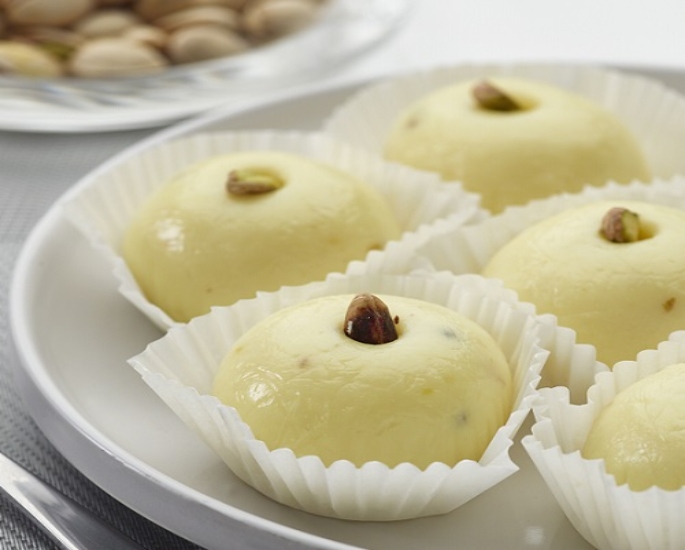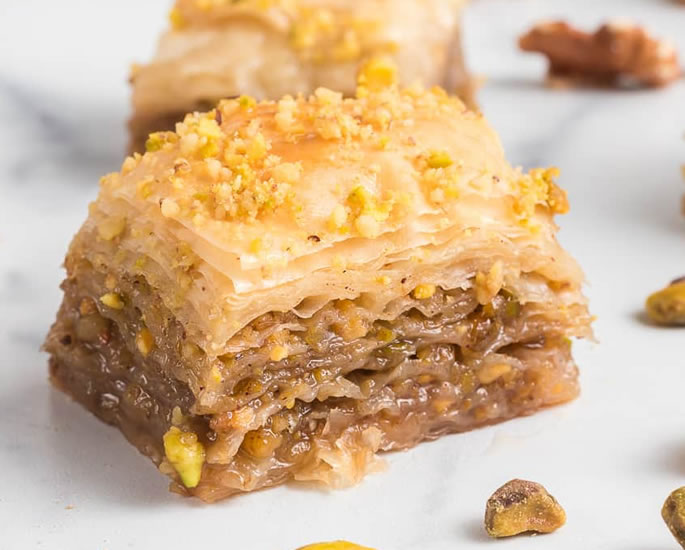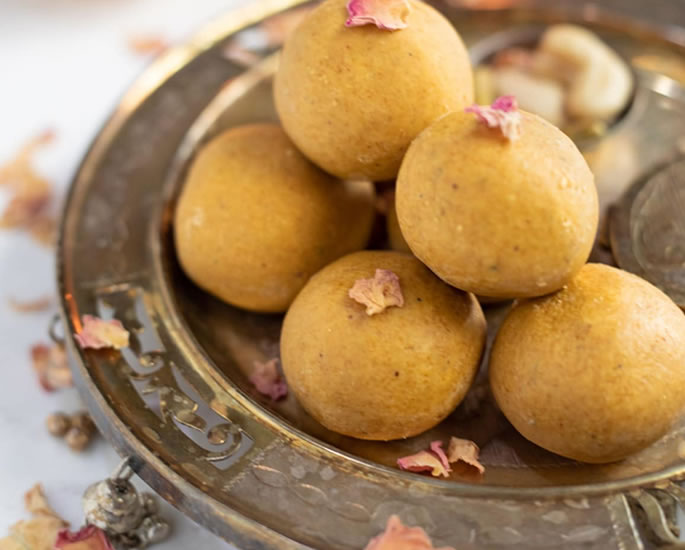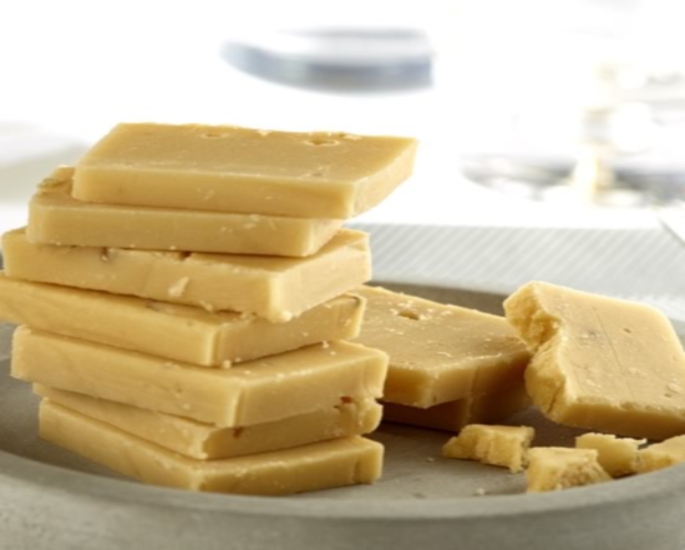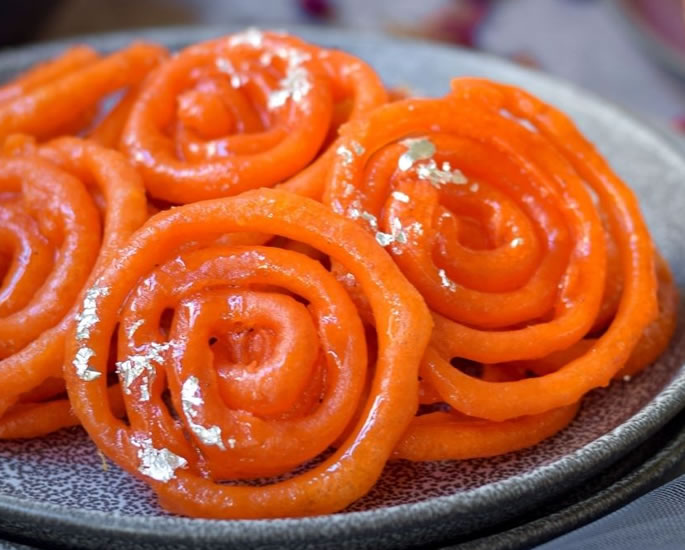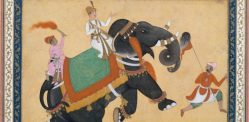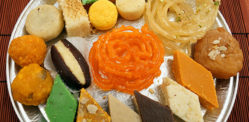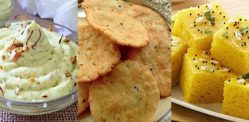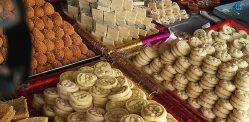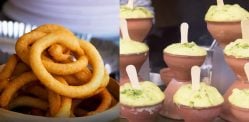In the South, Pakistani sweets are floral and more spiced.
There is an abundance of Pakistani sweets, with many having influences from other South Asian countries, including Turkey and India.
The sweets have interesting histories in terms of their function and purpose. There are also symbolic reasons as to why they are eaten.
In modern society, Pakistani sweets are popularly enjoyed at celebrations as well as gifted to family and friends.
It began with the discovery of sugar in India around 2,500 years ago.
It was originally extracted from sugarcane plants and was initially used in its raw form as a sweetener.
Over time, it developed into sugar and quickly became popular, being used in various foods.
Among them were sweets. They were created with different flavours, colours and textures.
The Mughal Empire had a huge influence on sweets.
Persian and Central Asian culinary influences introduced techniques like using sugar syrup for sweetening and incorporating ingredients like saffron, rose water, and dried fruits into sweets.
The British Raj also brought its own array of techniques before Partition saw the desserts make their way to Pakistan, where they were developed further.
We explore the history of Pakistani sweets.
How the British Raj Transformed Indian Mithai
When the British Raj ruled, new ingredients and techniques were incorporated into desserts.
Ingredients such as refined sugar, baking powder, cocoa and various flavourings were integrated into Indian sweets, leading to the creation of new dessert varieties and fusion recipes.
The British brought modern techniques and equipment for food processing and cooking.
This included improved methods for refining sugar, which led to the production of finer sugar varieties that became widely used in Indian sweets.
Additionally, the use of ovens and baking pans introduced by the British influenced the preparation of baked sweets like cakes and pastries in India.
The period also led to cultural exchanges between Indian and British culinary traditions.
For example, British desserts like puddings and custards influenced the development of Indian sweets like kheer (rice pudding) and phirni (semolina pudding).
These desserts incorporated local ingredients and flavours, creating unique hybrid dishes.
Where Did These Sweets Originate in Pakistan?
Pakistan is rich with many cultures but many of its culinary options have been influenced by Muslim immigrants from India.
Due to the vast inclusion of many ethnicities, recipes are abundant.
The landscape of deep valleys, varied climate and terrain resulted in the cultivation of fruits and spices.
The North is packed with succulent fruits such as pomegranates, mulberries, and cherries, as well as pistachio, walnuts and pine nuts.
In the valleys of Chitral, Kalash, Gilgit and Hunza, hot milk is flavoured by local honey and in the warmer months, apricots are dried and served with fresh cheese.
In the South, Pakistani sweets are floral and more spiced.
Saffron and cardamom-infused milk, as well as rice puddings and buffalo milk sweets, have gained popularity.
In the southern region of Sindh, sweets mirror the various communities. There are influences from Mumbai, east Punjab and Hyderabad.
Sindh’s summer fields have plenty of ripe sugar canes, along with pink guavas and mangoes. In the winter, there are sweet red carrots.
These are ingredients prevalent in their sweet inventions. Sweet shops have colourful sweets that are handmade with raw sugar and spices. They are sold by the kilo.
In comparison, flavours are somewhat different in Lahore, known as Pakistan’s food capital.
Due to the fertile lands of the Punjab province, popular sweets include vegetable halwa and rice puddings.
A part of Pakistani culture is to be hospitable to their guests and serve sweets.
Peda
In the 19th century, peda made its debut in the bustling kitchens of Dharwad’s sweet shops, nestled in the heart of Karnataka, India.
The origins of this delectable treat can be traced back to the skilled confectioners and masterful artisans who carefully crafted each batch with precision and care.
Initially, the recipe for peda was a closely guarded secret, passed down through generations within these families of sweet makers, ensuring its exclusivity and uniqueness.
As time passed and the reputation of peda spread far and wide, it began to transcend its humble beginnings and enter the realm of cultural significance.
In Karnataka, peda swiftly became a vital part of the state’s culinary identity, cherished for its creamy texture, rich flavour, and melt-in-your-mouth goodness.
The love for peda transcended borders and found its way to neighbouring regions, including Pakistan.
Baklava
In the 18th century, the Assyrian Empire made flatbreads in layers, with chopped nuts in between.
Centuries later, the Ancient Greeks and Romans created a “placenta cake”.
It was a sweet that consisted of layers of dough, filled with cheese and honey and flavoured with bay leaves.
However, the earliest version of baklava came around 500 years ago during the Ottoman Empire.
A gentleman called Efkan Güllü and his family have been in the business of baklava for more than five generations.
A bakery in Turkey, Gaziantep, the owner of Güllüoglu Baklava has dozens of branches around the world.
Güllü is the latest in a long line of pastry chefs that began with his great-grandfather, who invented the lovely pastry.
The story tells that his inspiration struck whilst he stopped in the ancient cities of Aleppo and Damascus on his way back from the Islamic Hajj pilgrimage in 1871.
In 1520, during the holy month, the Ottoman sultan gifted baklava to his most elite soldiers, the Janissaries. This was known as the Baklava Procession.
Laddoo
In the 4th century, Sasruta, an Indian surgeon, added medicinal ingredients to small sugar syrup balls.
The first laddoo was considered to be healthy. Ingredients included peanuts, sesame seeds and jaggery.
Both sesame seeds and jaggery are considered healthy as per Ayurvedic principles.
It was thought that they would regulate blood pressure, indigestion and the common cold.
Pregnant women and new mothers in rural areas in particular ate laddoo to boost their immune system.
Moreover, they were given to teenage girls to help regulate their hormones.
Earlier, laddoos were associated with health and not as sweet as such.
Over time there became laddoo varieties like sonth, methi and makhana.
In Southern India, the coconut laddoo originated from the Chola Empire and was eaten by soldiers for good luck.
Over the years, different variations of laddoo developed and in Pakistan, besan laddoo is a popular version.
Barfi
A sweet that originated in the state of Rajasthan, barfi is a treat that has been enjoyed by Indians and Pakistanis for centuries.
The word is derived from the Persian word ‘barf’ which means snow.
This name likely reflects the smooth and creamy texture of the sweet, resembling snow or ice.
The Mughal Empire played a significant role in popularising and refining the art of making barfi and other milk-based sweets.
During the Mughal era, skilled confectioners and chefs in royal kitchens experimented with various ingredients and techniques to create exquisite desserts.
They perfected the process of thickening milk into a solid mass, which formed the basis for many traditional Indian sweets, including barfi.
Jalebi
Jalebi originated from a Persian dish called Zalabiya, which means ‘twisted dough’.
From the 10th century, jalebi has appeared in many cookbooks. They were originally served to the caliphs of the Abbasid dynasty.
A caliph is “the supreme religious and political leader of an Islamic state known as the caliphate”.
This delicacy travelled with the Turkish and Persian traders and artisans to the Indian shores.
From the 15th century, the dish was deepened into the culture by being a treat at festivals and weddings.
The sweet symbolises joy, happiness and good fortune.
Jalebi made its way to Pakistan after Partition, where it has become a popular option at many street food stalls.
From the indigenous ingredients used in ancient times to the sophisticated techniques introduced during different historical periods, Pakistani sweets have evolved into a vibrant array of flavours, textures and delights.
The roots of Pakistani sweets can be traced back to indigenous ingredients like jaggery, fruits and nuts, reflecting the agricultural practices and cultural heritage of the region.
Over time, influences from various civilisations, including Persian, Mughal and British, contributed to the refinement and diversification of Pakistani sweets.
Today, Pakistani sweets are not only a source of culinary pleasure but also a symbol of cultural identity and heritage.





















































